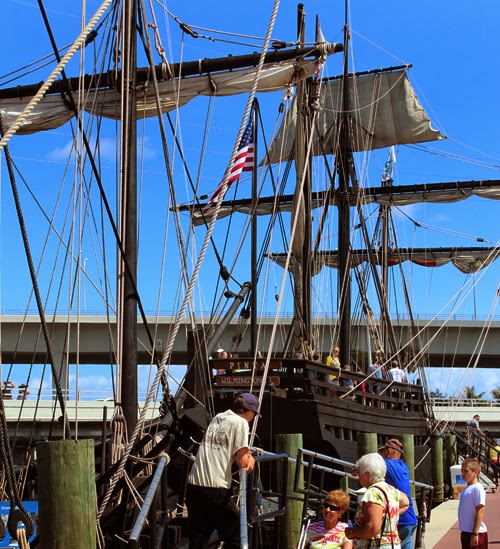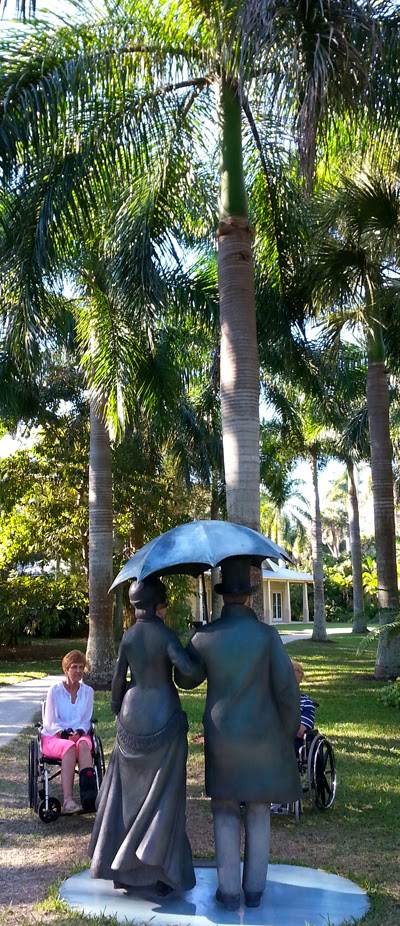LIFE'S
POTPOURRI--
The sun sprinkled
quicksilver on the proud little wavelets that morning as the three of us
launched our kayaks and headed across the Intercoastal Waterway from the DJ
Wilcox Preserve south of Vero Beach.
Greg, Betty and I were headed toward a geocache hidden on Spoil Island
#3.
In fact, there
are lots of Spoil Islands up and down this navigable waterway. They are man-made with dredged
"spoil" usually in the form of sand and piled away from the channel
ultimately forming islands when they sprout native vegetation like mangroves
and sea grapes which hold the sand in place.
They are anywhere
from an acre or so to five acres or even more and mature into marvelous habitat
for critters, including the human variety, the latter using them for a
multitude of recreational purposes like fishing, picnicking, and, of course,
geocaching.
The arm numbing
effort to propel these delightful little craft is often rewarded with the
exuberant arrival of dolphins sliding by, sometimes seeming to smile their
approval at our quiet means of locomotion.
Manatees too, although I didn't see any this day; perhaps due to the
power boats whizzing their way to and fro.
Betty and I were
treated to a brief visit from a very young ray which reflected its geometric
shape as our boats closely flanked its gentle passage.
These waters are
brackish (a mixture of fresh and salt water).
The fresh water arrives via a sprawling network of drainage canals and
the salt water arrives with the inflow of tides through the Sebastian Inlet to
the north and the Fort Pierce Inlet to the south.
Naturally these
inlets are traffic lanes for sea creatures too, like sharks. Every time I see a dolphin's fin breaking the
water I'm hoping it isn't an aggressive shark with knowledge of the flimsy
marine architecture of my little craft, separating me from his lunch.
Alligators
too. Greg saw one this day,
"...easily a 10 footer" he smiled as I shivered in the sub-tropical
heat. His sighting was in the marsh-like
mangrove channels near our launch place.
These guys, also way above me in the food chain, prefer fresh water so
he likely was just prowling along the edge of his preferred habitat.
Greg, a birder of
considerable accomplishment, always boated his paddle and smoothed his
binoculars into a view of the avian-busy sandbars. Greg is from Sunbury, OH and our lady
companion Betty is from Tupper Lake, NY up in the Adirondack Mountains where
her friends are still using snow-shoes for their geocaching.
We wound up
paddling about 5 miles that day and I headed home in time to change into my
dancing costume then a robust evening of square dancing in Port Salerno.
Sue remains
indisposed with crutches so she spectated while I danced with more gusto than
was available until I "hit the wall" near the end of the evening and
headed for the sidelines before my body headed for the floor and took me with
it.
Turns out the
recovery was quick and we headed home for a short evening's nap before it was
time to rise and shine for a trip to Port St. Lucie the following morning and a
baseball, Spring Training game between the New York Mets and Atlanta Braves.
Also turns out it
was a humdinger. The lead changed hands
multiple times until the Mets came to bat in the bottom of the ninth inning
trailing by two runs. They managed to
get two runners aboard but also suffered two outs as the door began to slam on
their hopes.
Then, yes! The next Mets batter hit a home run so hard
it was still climbing when it crossed the left field fence and the home team
celebrated a walk-off, story-book ending.
The high-light of
my adventuresome pair of days actually occurred in the doldrums surrounding the
7th inning stretch. A towering foul ball
sailed above our first base-line seats and landed with a ballistic snap on a
guy a couple of seats to my right, ricocheted across the neighbor lady's back
and came to rest between my right hip and the seat arm.
I managed to win
the hand-battle for possession and pondered the ball's meaning to the little
boy I had just become with his first-ever ball park souvenir.
Then, I noticed
that little girl, likely preschool, who had been watching the foul ball's
antics and handed it to the fellow in front of me, asking him to pass it along
to her.
Her mom saw what
was happening and beamed her appreciation my way while she pointed me out to
her gleeful daughter who treated me to a shy little smile.
Life is good.













